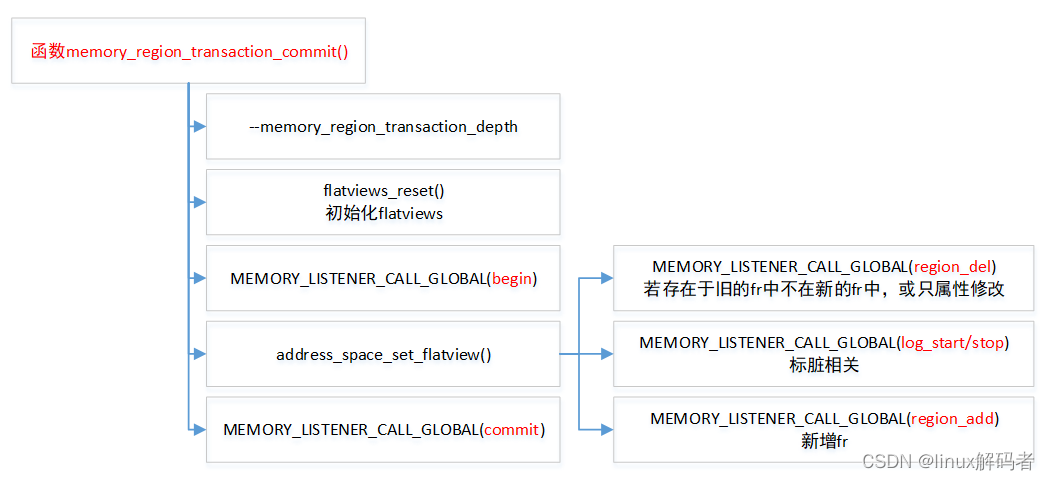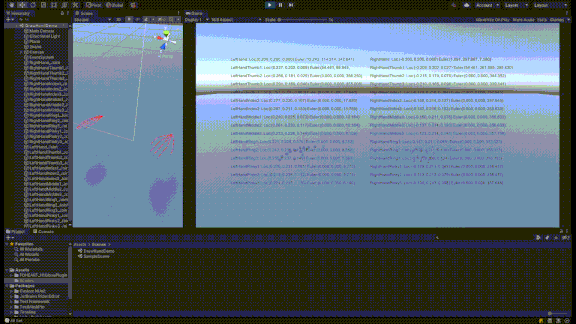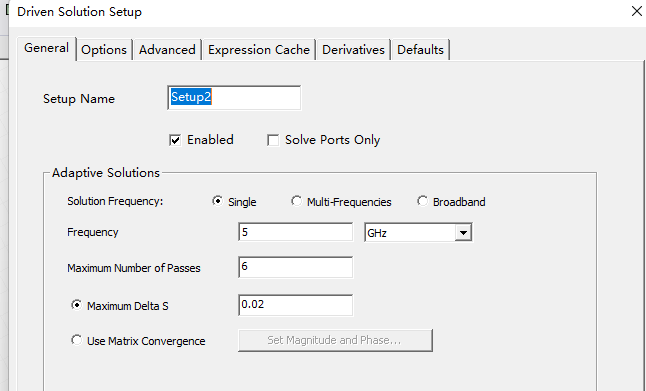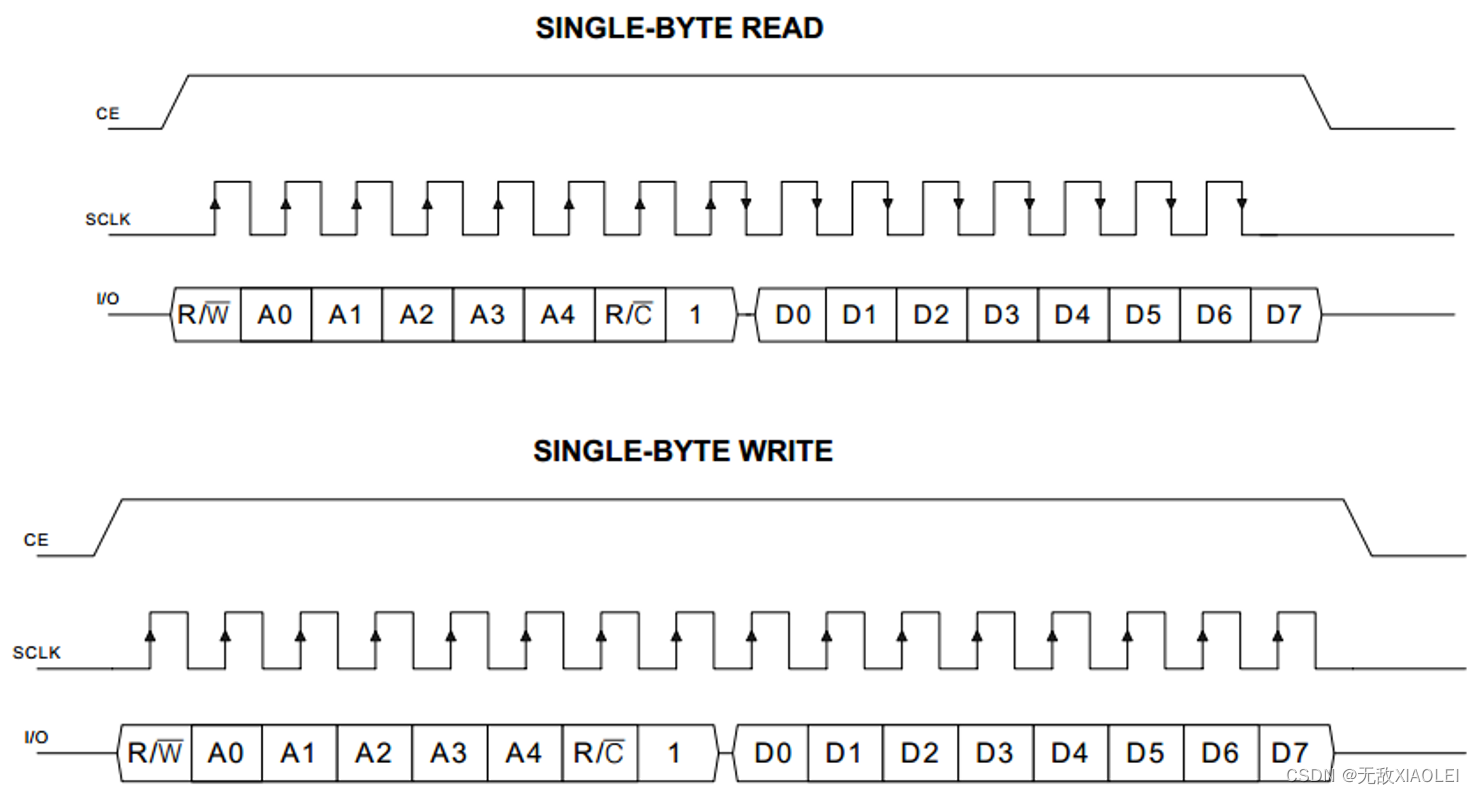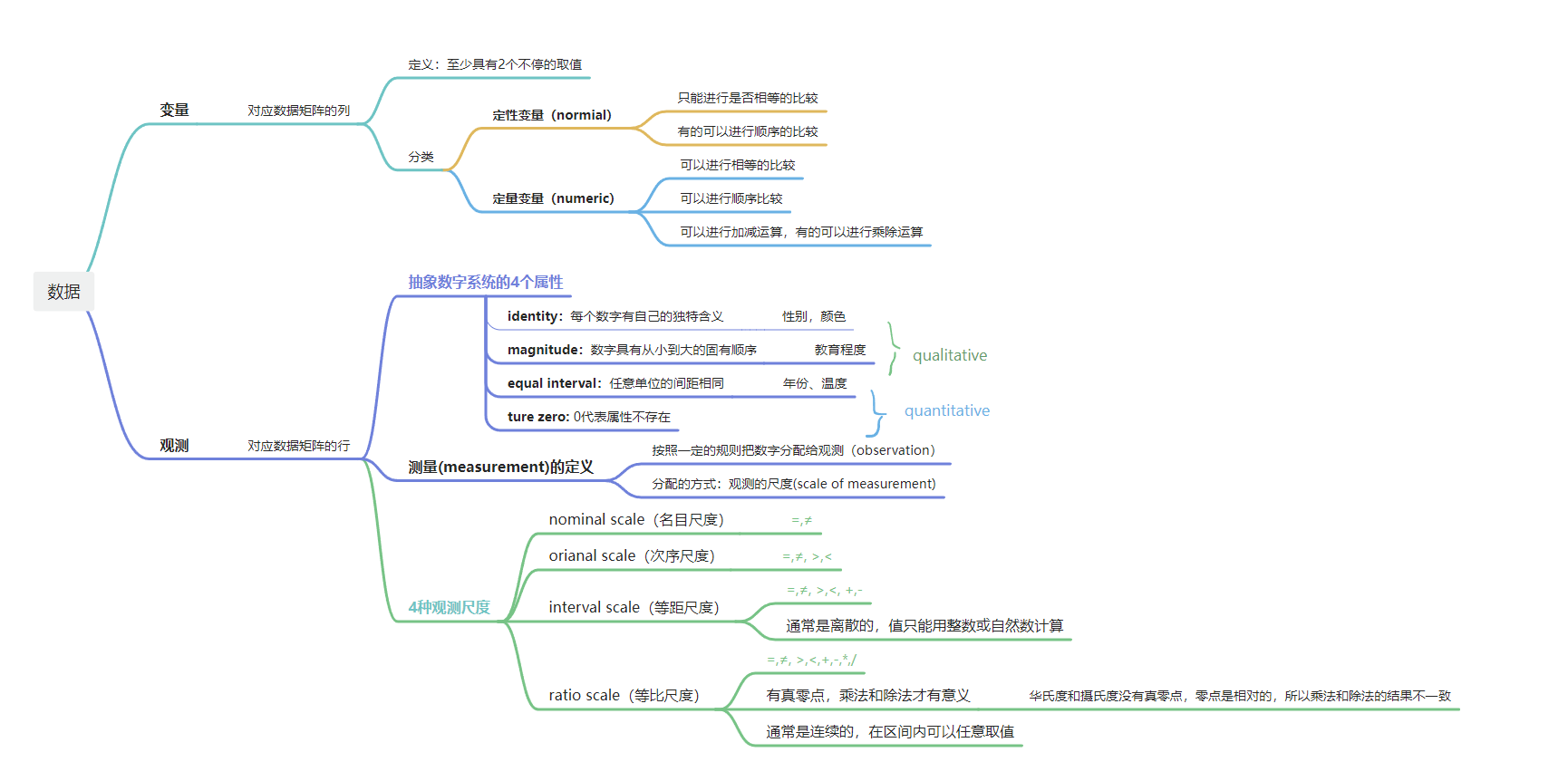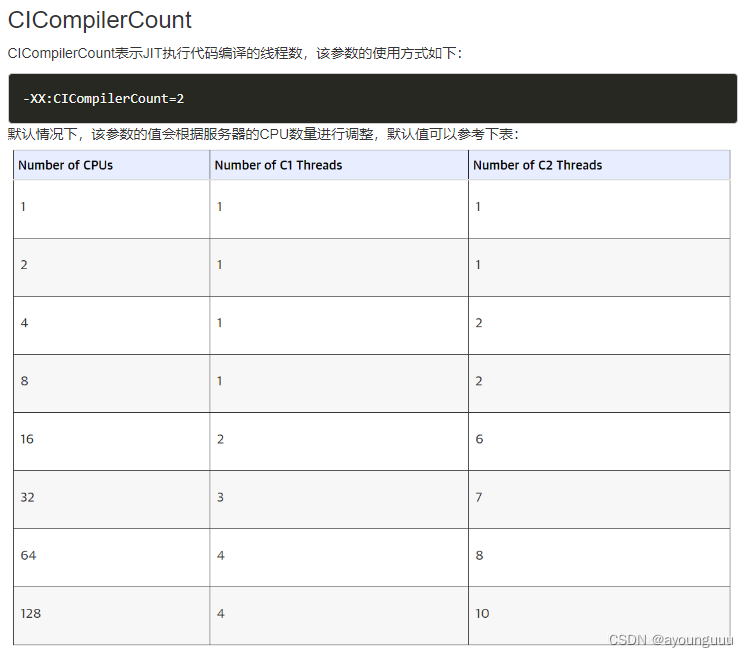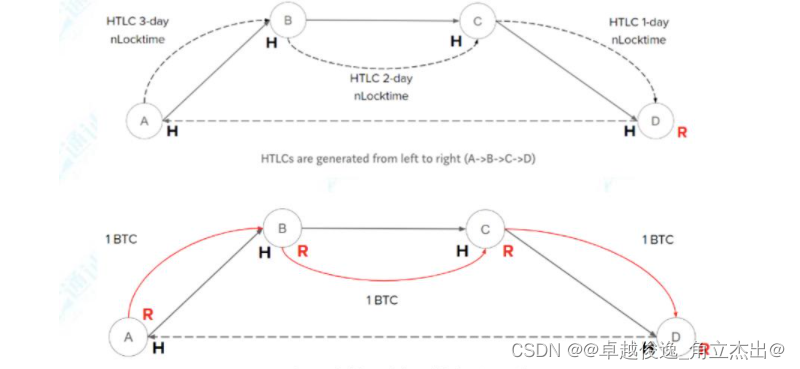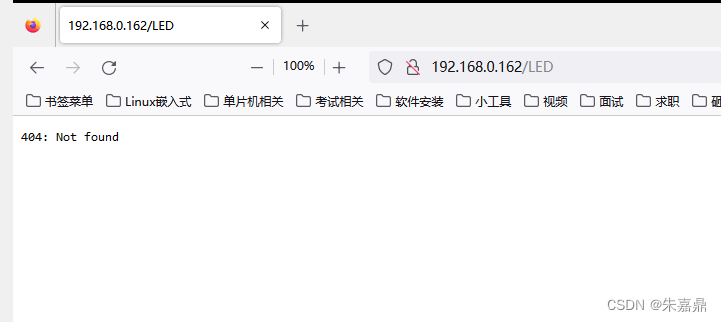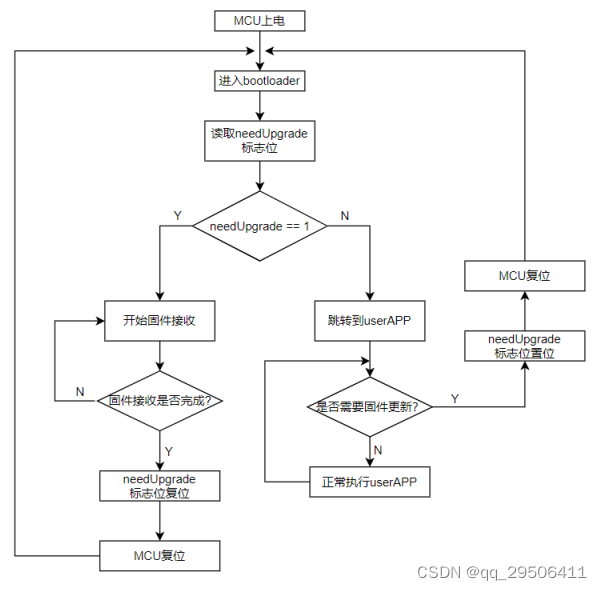1、阻塞
- 阻塞模式下,相关方法都会导致线程暂停
- ServerSocketChannel.accept 会在没有连接建立时让线程暂停
- SocketChannel.read 会在通道中没有数据可读时让线程暂停
- 阻塞的表现其实就是线程暂停了,暂停期间不会占用 cpu,但线程相当于闲置
- 单线程下,阻塞方法之间相互影响,几乎不能正常工作,需要多线程支持
- 但多线程下,有新的问题,体现在以下方面
- 32 位 jvm 一个线程 320k,64 位 jvm 一个线程 1024k,如果连接数过多,必然导致 OOM,并且线程太多,反而会因为频繁上下文切换导致性能降低
- 可以采用线程池技术来减少线程数和线程上下文切换,但治标不治本,如果有很多连接建立,但长时间 inactive,会阻塞线程池中所有线程,因此不适合长连接,只适合短连接
服务端代码
public class Server {
public static void main(String[] args) {
// 创建缓冲区
ByteBuffer buffer = ByteBuffer.allocate(16);
// 获得服务器通道
try(ServerSocketChannel server = ServerSocketChannel.open()) {
// 为服务器通道绑定端口
server.bind(new InetSocketAddress(8080));
// 用户存放连接的集合
ArrayList<SocketChannel> channels = new ArrayList<>();
// 循环接收连接
while (true) {
System.out.println("before connecting...");
// 没有连接时,会阻塞线程
SocketChannel socketChannel = server.accept();
System.out.println("after connecting...");
channels.add(socketChannel);
// 循环遍历集合中的连接
for(SocketChannel channel : channels) {
System.out.println("before reading");
// 处理通道中的数据
// 当通道中没有数据可读时,会阻塞线程
channel.read(buffer);
buffer.flip();
ByteBufferUtil.debugRead(buffer);
buffer.clear();
System.out.println("after reading");
}
}
} catch (IOException e) {
e.printStackTrace();
}
}
}
客户端代码
public class Client {
public static void main(String[] args) {
try (SocketChannel socketChannel = SocketChannel.open()) {
// 建立连接
socketChannel.connect(new InetSocketAddress("localhost", 8080));
System.out.println("waiting...");
} catch (IOException e) {
e.printStackTrace();
}
}
}
运行结果
- 客户端 - 服务器建立连接前:服务器端因 accept 阻塞

- 客户端 - 服务器建立连接后,客户端发送消息前:服务器端因通道为空被阻塞
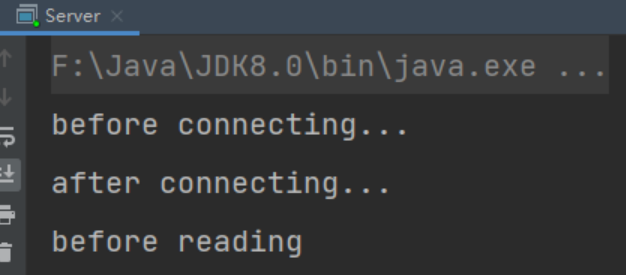
- 客户端发送数据后,服务器处理通道中的数据。再次进入循环时,再次被 accept 阻塞

- 之前的客户端再次发送消息,服务器端因为被 accept 阻塞,无法处理之前客户端发送到通道中的信息

2、非阻塞
- 可以通过 ServerSocketChannel 的 configureBlocking (false) 方法将 获得连接设置为非阻塞的。此时若没有连接,accept 会返回 null
- 可以通过 SocketChannel 的 configureBlocking (false) 方法将从通道中 读取数据设置为非阻塞的。若此时通道中没有数据可读,read 会返回 - 1
服务器代码如下
public class Server {
public static void main(String[] args) {
// 创建缓冲区
ByteBuffer buffer = ByteBuffer.allocate(16);
// 获得服务器通道
try(ServerSocketChannel server = ServerSocketChannel.open()) {
// 设置为非阻塞模式,没有连接时返回null,不会阻塞线程
server.configureBlocking(false);
// 为服务器通道绑定端口
server.bind(new InetSocketAddress(8080));
// 用户存放连接的集合
ArrayList<SocketChannel> channels = new ArrayList<>();
// 循环接收连接
while (true) {
SocketChannel socketChannel = server.accept();
// 通道不为空时才将连接放入到集合中
if (socketChannel != null) {
System.out.println("after connecting...");
channels.add(socketChannel);
}
// 循环遍历集合中的连接
for(SocketChannel channel : channels) {
// 处理通道中的数据
// 设置为非阻塞模式,若通道中没有数据,会返回0,不会阻塞线程
channel.configureBlocking(false);
int read = channel.read(buffer);
if(read > 0) {
buffer.flip();
ByteBufferUtil.debugRead(buffer);
buffer.clear();
System.out.println("after reading");
}
}
}
} catch (IOException e) {
e.printStackTrace();
}
}
}
这样写存在一个问题,因为设置为了非阻塞,会一直执行 while (true) 中的代码,CPU 一直处于忙碌状态,会使得性能变低,所以实际情况中不使用这种方法处理请求
3、Selector
多路复用
单线程可以配合 Selector 完成对多个 Channel 可读写事件的监控,这称之为多路复用
- 多路复用仅针对网络 IO,普通文件 IO 无法利用多路复用
- 如果不用 Selector 的非阻塞模式,线程大部分时间都在做无用功,而 Selector 能够保证
- 有可连接事件时才去连接
- 有可读事件才去读取
- 有可写事件才去写入
- 限于网络传输能力,Channel 未必时时可写,一旦 Channel 可写,会触发 Selector 的可写事件
4、使用及 Accpet 事件
要使用 Selector 实现多路复用,服务端代码如下改进
public class SelectServer {
public static void main(String[] args) {
ByteBuffer buffer = ByteBuffer.allocate(16);
// 获得服务器通道
try(ServerSocketChannel server = ServerSocketChannel.open()) {
server.bind(new InetSocketAddress(8080));
// 创建选择器
Selector selector = Selector.open();
// 通道必须设置为非阻塞模式
server.configureBlocking(false);
// 将通道注册到选择器中,并设置感兴趣的事件
server.register(selector, SelectionKey.OP_ACCEPT);
while (true) {
// 若没有事件就绪,线程会被阻塞,反之不会被阻塞。从而避免了CPU空转
// 返回值为就绪的事件个数
int ready = selector.select();
System.out.println("selector ready counts : " + ready);
// 获取所有事件
Set<SelectionKey> selectionKeys = selector.selectedKeys();
// 使用迭代器遍历事件
Iterator<SelectionKey> iterator = selectionKeys.iterator();
while (iterator.hasNext()) {
SelectionKey key = iterator.next();
// 判断key的类型
if(key.isAcceptable()) {
// 获得key对应的channel
ServerSocketChannel channel = (ServerSocketChannel) key.channel();
System.out.println("before accepting...");
// 获取连接并处理,而且是必须处理,否则需要取消
SocketChannel socketChannel = channel.accept();
System.out.println("after accepting...");
// 处理完毕后移除
iterator.remove();
}
}
}
} catch (IOException e) {
e.printStackTrace();
}
}
}
步骤解析
- 获得选择器 Selector
Selector selector = Selector.open();
- 将通道设置为非阻塞模式,并注册到选择器中,并设置感兴趣的事件
- channel 必须工作在非阻塞模式
- FileChannel 没有非阻塞模式,因此不能配合 selector 一起使用
- 绑定的事件类型可以有
- connect - 客户端连接成功时触发
- accept - 服务器端成功接受连接时触发
- read - 数据可读入时触发,有因为接收能力弱,数据暂不能读入的情况
- write - 数据可写出时触发,有因为发送能力弱,数据暂不能写出的情况
// 通道必须设置为非阻塞模式
server.configureBlocking(false);
// 将通道注册到选择器中,并设置感兴趣的实践
server.register(selector, SelectionKey.OP_ACCEPT);
-
通过 Selector 监听事件,并获得就绪的通道个数,若没有通道就绪,线程会被阻塞
-
阻塞直到绑定事件发生
int count = selector.select(); -
阻塞直到绑定事件发生,或是超时(时间单位为 ms)
int count = selector.select(long timeout); -
不会阻塞,也就是不管有没有事件,立刻返回,自己根据返回值检查是否有事件
int count = selector.selectNow();
-
-
获取就绪事件并得到对应的通道,然后进行处理
// 获取所有事件
Set<SelectionKey> selectionKeys = selector.selectedKeys();
// 使用迭代器遍历事件
Iterator<SelectionKey> iterator = selectionKeys.iterator();
while (iterator.hasNext()) {
SelectionKey key = iterator.next();
// 判断key的类型,此处为Accept类型
if(key.isAcceptable()) {
// 获得key对应的channel
ServerSocketChannel channel = (ServerSocketChannel) key.channel();
// 获取连接并处理,而且是必须处理,否则需要取消
SocketChannel socketChannel = channel.accept();
// 处理完毕后移除
iterator.remove();
}
}
事件发生后能否不处理
事件发生后,要么处理,要么取消(cancel),不能什么都不做,否则下次该事件仍会触发,这是因为 nio 底层使用的是水平触发
5、Read 事件
- 在 Accept 事件中,若有客户端与服务器端建立了连接,需要将其对应的 SocketChannel 设置为非阻塞,并注册到选择其中
添加 Read 事件,触发后进行读取操作 - 添加 Read 事件,触发后进行读取操作
public class SelectServer {
public static void main(String[] args) {
ByteBuffer buffer = ByteBuffer.allocate(16);
// 获得服务器通道
try(ServerSocketChannel server = ServerSocketChannel.open()) {
server.bind(new InetSocketAddress(8080));
// 创建选择器
Selector selector = Selector.open();
// 通道必须设置为非阻塞模式
server.configureBlocking(false);
// 将通道注册到选择器中,并设置感兴趣的实践
server.register(selector, SelectionKey.OP_ACCEPT);
// 为serverKey设置感兴趣的事件
while (true) {
// 若没有事件就绪,线程会被阻塞,反之不会被阻塞。从而避免了CPU空转
// 返回值为就绪的事件个数
int ready = selector.select();
System.out.println("selector ready counts : " + ready);
// 获取所有事件
Set<SelectionKey> selectionKeys = selector.selectedKeys();
// 使用迭代器遍历事件
Iterator<SelectionKey> iterator = selectionKeys.iterator();
while (iterator.hasNext()) {
SelectionKey key = iterator.next();
// 判断key的类型
if(key.isAcceptable()) {
// 获得key对应的channel
ServerSocketChannel channel = (ServerSocketChannel) key.channel();
System.out.println("before accepting...");
// 获取连接
SocketChannel socketChannel = channel.accept();
System.out.println("after accepting...");
// 设置为非阻塞模式,同时将连接的通道也注册到选择其中
socketChannel.configureBlocking(false);
socketChannel.register(selector, SelectionKey.OP_READ);
// 处理完毕后移除
iterator.remove();
} else if (key.isReadable()) {
SocketChannel channel = (SocketChannel) key.channel();
System.out.println("before reading...");
channel.read(buffer);
System.out.println("after reading...");
buffer.flip();
ByteBufferUtil.debugRead(buffer);
buffer.clear();
// 处理完毕后移除
iterator.remove();
}
}
}
} catch (IOException e) {
e.printStackTrace();
}
}
}
删除事件
当处理完一个事件后,一定要调用迭代器的 remove 方法移除对应事件,否则会出现错误。原因如下
以我们上面的 Read 事件 的代码为例
-
当调用了 server.register (selector, SelectionKey.OP_ACCEPT) 后,Selector 中维护了一个集合,用于存放 SelectionKey 以及其对应的通道
// WindowsSelectorImpl 中的 SelectionKeyImpl数组 private SelectionKeyImpl[] channelArray = new SelectionKeyImpl[8];public class SelectionKeyImpl extends AbstractSelectionKey { // Key对应的通道 final SelChImpl channel; ... }
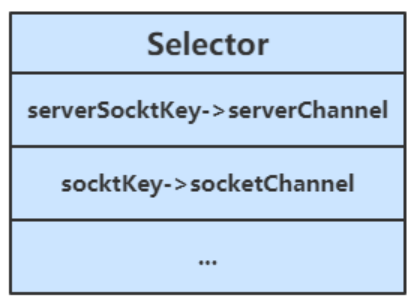
- 当选择器中的通道对应的事件发生后,selecionKey 会被放到另一个集合中,但是 selecionKey 不会自动移除,所以需要我们在处理完一个事件后,通过迭代器手动移除其中的 selecionKey。否则会导致已被处理过的事件再次被处理,就会引发错误

断开处理
当客户端与服务器之间的连接断开时,会给服务器端发送一个读事件,对异常断开和正常断开需要加以不同的方式进行处理
-
正常断开
-
正常断开时,服务器端的 channel.read (buffer) 方法的返回值为 - 1,所以当结束到返回值为 - 1 时,需要调用 key 的 cancel 方法取消此事件,并在取消后移除该事件
int read = channel.read(buffer); // 断开连接时,客户端会向服务器发送一个写事件,此时read的返回值为-1 if(read == -1) { // 取消该事件的处理 key.cancel(); channel.close(); } else { ... } // 取消或者处理,都需要移除key iterator.remove();
-
-
异常断开
- 异常断开时,会抛出 IOException 异常, 在 try-catch 的 catch 块中捕获异常并调用 key 的 cancel 方法即可
消息边界
不处理消息边界存在的问题
将缓冲区的大小设置为 4 个字节,发送 2 个汉字(你好),通过 decode 解码并打印时,会出现乱码
ByteBuffer buffer = ByteBuffer.allocate(4);
// 解码并打印
System.out.println(StandardCharsets.UTF_8.decode(buffer));
你�
��
这是因为 UTF-8 字符集下,1 个汉字占用 3 个字节,此时缓冲区大小为 4 个字节,一次读时间无法处理完通道中的所有数据,所以一共会触发两次读事件。这就导致 你好 的 好 字被拆分为了前半部分和后半部分发送,解码时就会出现问题
处理消息边界
传输的文本可能有以下三种情况
- 文本大于缓冲区大小
- 此时需要将缓冲区进行扩容
- 发生半包现象
- 发生粘包现象

解决思路大致有以下三种
-
固定消息长度,数据包大小一样,服务器按预定长度读取,当发送的数据较少时,需要将数据进行填充,直到长度与消息规定长度一致。缺点是浪费带宽
-
另一种思路是按分隔符拆分,缺点是效率低,需要一个一个字符地去匹配分隔符
-
TLV 格式,即 Type 类型、Length 长度、Value 数据
(也就是在消息开头用一些空间存放后面数据的长度),如 HTTP 请求头中的 Content-Type 与 Content-Length
。类型和长度已知的情况下,就可以方便获取消息大小,分配合适的 buffer,缺点是 buffer 需要提前分配,如果内容过大,则影响 server 吞吐量
- Http 1.1 是 TLV 格式
-
Http 2.0 是 LTV 格式
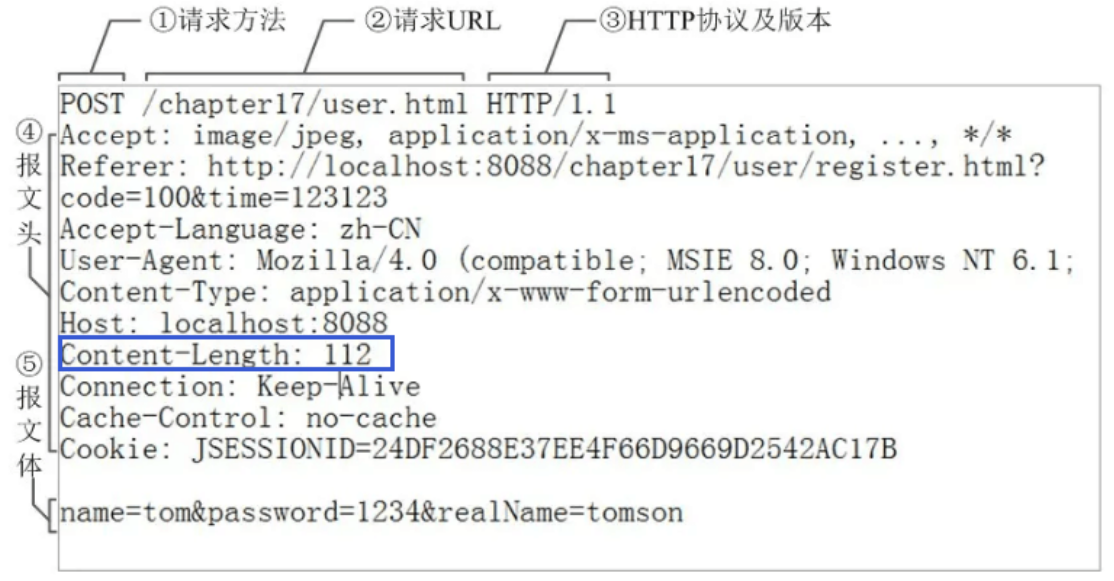
下文的消息边界处理方式为第二种:按分隔符拆分
附件与扩容
Channel 的 register 方法还有第三个参数:附件,可以向其中放入一个 Object 类型的对象,该对象会与登记的 Channel 以及其对应的 SelectionKey 绑定,可以从 SelectionKey 获取到对应通道的附件
public final SelectionKey register(Selector sel, int ops, Object att)
可通过 SelectionKey 的 attachment () 方法获得附件
ByteBuffer buffer = (ByteBuffer) key.attachment();
我们需要在 Accept 事件发生后,将通道注册到 Selector 中时,对每个通道添加一个 ByteBuffer 附件,让每个通道发生读事件时都使用自己的通道,避免与其他通道发生冲突而导致问题
// 设置为非阻塞模式,同时将连接的通道也注册到选择其中,同时设置附件
socketChannel.configureBlocking(false);
ByteBuffer buffer = ByteBuffer.allocate(16);
// 添加通道对应的Buffer附件
socketChannel.register(selector, SelectionKey.OP_READ, buffer);
当 Channel 中的数据大于缓冲区时,需要对缓冲区进行扩容操作。此代码中的扩容的判定方法: Channel 调用 compact 方法后,的 position 与 limit 相等,说明缓冲区中的数据并未被读取(容量太小),此时创建新的缓冲区,其大小扩大为两倍。同时还要将旧缓冲区中的数据拷贝到新的缓冲区中,同时调用 SelectionKey 的 attach 方法将新的缓冲区作为新的附件放入 SelectionKey 中
// 如果缓冲区太小,就进行扩容
if (buffer.position() == buffer.limit()) {
ByteBuffer newBuffer = ByteBuffer.allocate(buffer.capacity()*2);
// 将旧buffer中的内容放入新的buffer中
ewBuffer.put(buffer);
// 将新buffer作为附件放到key中
key.attach(newBuffer);
}
改造后的服务器代码如下
public class SelectServer {
public static void main(String[] args) {
// 获得服务器通道
try(ServerSocketChannel server = ServerSocketChannel.open()) {
server.bind(new InetSocketAddress(8080));
// 创建选择器
Selector selector = Selector.open();
// 通道必须设置为非阻塞模式
server.configureBlocking(false);
// 将通道注册到选择器中,并设置感兴趣的事件
server.register(selector, SelectionKey.OP_ACCEPT);
// 为serverKey设置感兴趣的事件
while (true) {
// 若没有事件就绪,线程会被阻塞,反之不会被阻塞。从而避免了CPU空转
// 返回值为就绪的事件个数
int ready = selector.select();
System.out.println("selector ready counts : " + ready);
// 获取所有事件
Set<SelectionKey> selectionKeys = selector.selectedKeys();
// 使用迭代器遍历事件
Iterator<SelectionKey> iterator = selectionKeys.iterator();
while (iterator.hasNext()) {
SelectionKey key = iterator.next();
iterator.remove();
// 判断key的类型
if(key.isAcceptable()) {
// 获得key对应的channel
ServerSocketChannel channel = (ServerSocketChannel) key.channel();
System.out.println("before accepting...");
// 获取连接
SocketChannel socketChannel = channel.accept();
System.out.println("after accepting...");
// 设置为非阻塞模式,同时将连接的通道也注册到选择其中,同时设置附件
socketChannel.configureBlocking(false);
ByteBuffer buffer = ByteBuffer.allocate(16);
socketChannel.register(selector, SelectionKey.OP_READ, buffer);
} else if (key.isReadable()) {
SocketChannel channel = (SocketChannel) key.channel();
System.out.println("before reading...");
// 通过key获得附件(buffer)
ByteBuffer buffer = (ByteBuffer) key.attachment();
int read = channel.read(buffer);
if(read == -1) {
key.cancel();
channel.close();
} else {
// 通过分隔符来分隔buffer中的数据
split(buffer);
// 如果缓冲区太小,就进行扩容
if (buffer.position() == buffer.limit()) {
ByteBuffer newBuffer = ByteBuffer.allocate(buffer.capacity()*2);
// 将旧buffer中的内容放入新的buffer中
buffer.flip();
newBuffer.put(buffer);
// 将新buffer放到key中作为附件
key.attach(newBuffer);
}
}
System.out.println("after reading...");
}
}
}
} catch (IOException e) {
e.printStackTrace();
}
}
private static void split(ByteBuffer buffer) {
buffer.flip();
for(int i = 0; i < buffer.limit(); i++) {
// 遍历寻找分隔符
// get(i)不会移动position
if (buffer.get(i) == '\n') {
// 缓冲区长度
int length = i+1-buffer.position();
ByteBuffer target = ByteBuffer.allocate(length);
// 将前面的内容写入target缓冲区
for(int j = 0; j < length; j++) {
// 将buffer中的数据写入target中
target.put(buffer.get());
}
// 打印结果
ByteBufferUtil.debugAll(target);
}
}
// 切换为写模式,但是缓冲区可能未读完,这里需要使用compact
buffer.compact();
}
}
ByteBuffer 的大小分配
- 每个 channel 都需要记录可能被切分的消息,因为 ByteBuffer 不能被多个 channel 共同使用,因此需要为每个 channel 维护一个独立的 ByteBuffer
- ByteBuffer 不能太大,比如一个 ByteBuffer 1Mb 的话,要支持百万连接就要 1Tb 内存,因此需要设计大小可变的 ByteBuffer
- 分配思路可以参考
- 一种思路是首先分配一个较小的 buffer,例如 4k,如果发现数据不够,再分配 8k 的 buffer,将 4k buffer 内容拷贝至 8k buffer,优点是消息连续容易处理,缺点是数据拷贝耗费性能
- 另一种思路是用多个数组组成 buffer,一个数组不够,把多出来的内容写入新的数组,与前面的区别是消息存储不连续解析复杂,优点是避免了拷贝引起的性能损耗
6、Write 事件
服务器通过 Buffer 向通道中写入数据时,可能因为通道容量小于 Buffer 中的数据大小,导致无法一次性将 Buffer 中的数据全部写入到 Channel 中,这时便需要分多次写入,具体步骤如下
-
执行一次写操作,向将 buffer 中的内容写入到 SocketChannel 中,然后判断 Buffer 中是否还有数据
-
若 Buffer 中还有数据,则需要将 SockerChannel 注册到 Seletor 中,并关注写事件,同时将未写完的 Buffer 作为附件一起放入到 SelectionKey 中
int write = socket.write(buffer);
// 通道中可能无法放入缓冲区中的所有数据
if (buffer.hasRemaining()) {
// 注册到Selector中,关注可写事件,并将buffer添加到key的附件中
socket.configureBlocking(false);
socket.register(selector, SelectionKey.OP_WRITE, buffer);
}
- 添加写事件的相关操作 key.isWritable(),对 Buffer 再次进行写操作
- 每次写后需要判断 Buffer 中是否还有数据(是否写完)。若写完,需要移除 SelecionKey 中的 Buffer 附件,避免其占用过多内存,同时还需移除对写事件的关注
SocketChannel socket = (SocketChannel) key.channel();
// 获得buffer
ByteBuffer buffer = (ByteBuffer) key.attachment();
// 执行写操作
int write = socket.write(buffer);
System.out.println(write);
// 如果已经完成了写操作,需要移除key中的附件,同时不再对写事件感兴趣
if (!buffer.hasRemaining()) {
key.attach(null);
key.interestOps(0);
}
整体代码如下
public class WriteServer {
public static void main(String[] args) {
try(ServerSocketChannel server = ServerSocketChannel.open()) {
server.bind(new InetSocketAddress(8080));
server.configureBlocking(false);
Selector selector = Selector.open();
server.register(selector, SelectionKey.OP_ACCEPT);
while (true) {
selector.select();
Set<SelectionKey> selectionKeys = selector.selectedKeys();
Iterator<SelectionKey> iterator = selectionKeys.iterator();
while (iterator.hasNext()) {
SelectionKey key = iterator.next();
// 处理后就移除事件
iterator.remove();
if (key.isAcceptable()) {
// 获得客户端的通道
SocketChannel socket = server.accept();
// 写入数据
StringBuilder builder = new StringBuilder();
for(int i = 0; i < 500000000; i++) {
builder.append("a");
}
ByteBuffer buffer = StandardCharsets.UTF_8.encode(builder.toString());
// 先执行一次Buffer->Channel的写入,如果未写完,就添加一个可写事件
int write = socket.write(buffer);
System.out.println(write);
// 通道中可能无法放入缓冲区中的所有数据
if (buffer.hasRemaining()) {
// 注册到Selector中,关注可写事件,并将buffer添加到key的附件中
socket.configureBlocking(false);
socket.register(selector, SelectionKey.OP_WRITE, buffer);
}
} else if (key.isWritable()) {
SocketChannel socket = (SocketChannel) key.channel();
// 获得buffer
ByteBuffer buffer = (ByteBuffer) key.attachment();
// 执行写操作
int write = socket.write(buffer);
System.out.println(write);
// 如果已经完成了写操作,需要移除key中的附件,同时不再对写事件感兴趣
if (!buffer.hasRemaining()) {
key.attach(null);
key.interestOps(0);
}
}
}
}
} catch (IOException e) {
e.printStackTrace();
}
}
}
7、优化
多线程优化
充分利用多核 CPU,分两组选择器
- 单线程配一个选择器(Boss),专门处理 accept 事件
- 创建 cpu 核心数的线程(Worker),每个线程配一个选择器,轮流处理 read 事件
实现思路
-
创建一个负责处理 Accept 事件的 Boss 线程,与多个负责处理 Read 事件的 Worker 线程
-
Boss 线程执行的操作
-
接受并处理 Accepet 事件,当 Accept 事件发生后,调用 Worker 的 register (SocketChannel socket) 方法,让 Worker 去处理 Read 事件,其中需要根据标识 robin 去判断将任务分配给哪个 Worker
// 创建固定数量的Worker Worker[] workers = new Worker[4]; // 用于负载均衡的原子整数 AtomicInteger robin = new AtomicInteger(0); // 负载均衡,轮询分配Worker workers[robin.getAndIncrement()% workers.length].register(socket); -
register (SocketChannel socket) 方法会通过同步队列完成 Boss 线程与 Worker 线程之间的通信,让 SocketChannel 的注册任务被 Worker 线程执行。添加任务后需要调用 selector.wakeup () 来唤醒被阻塞的 Selector
public void register(final SocketChannel socket) throws IOException { // 只启动一次 if (!started) { // 初始化操作 } // 向同步队列中添加SocketChannel的注册事件 // 在Worker线程中执行注册事件 queue.add(new Runnable() { @Override public void run() { try { socket.register(selector, SelectionKey.OP_READ); } catch (IOException e) { e.printStackTrace(); } } }); // 唤醒被阻塞的Selector // select类似LockSupport中的park,wakeup的原理类似LockSupport中的unpark selector.wakeup(); }
-
-
Worker 线程执行的操作
- 从同步队列中获取注册任务,并处理 Read 事件
实现代码
public class ThreadsServer {
public static void main(String[] args) {
try (ServerSocketChannel server = ServerSocketChannel.open()) {
// 当前线程为Boss线程
Thread.currentThread().setName("Boss");
server.bind(new InetSocketAddress(8080));
// 负责轮询Accept事件的Selector
Selector boss = Selector.open();
server.configureBlocking(false);
server.register(boss, SelectionKey.OP_ACCEPT);
// 创建固定数量的Worker
Worker[] workers = new Worker[4];
// 用于负载均衡的原子整数
AtomicInteger robin = new AtomicInteger(0);
for(int i = 0; i < workers.length; i++) {
workers[i] = new Worker("worker-"+i);
}
while (true) {
boss.select();
Set<SelectionKey> selectionKeys = boss.selectedKeys();
Iterator<SelectionKey> iterator = selectionKeys.iterator();
while (iterator.hasNext()) {
SelectionKey key = iterator.next();
iterator.remove();
// BossSelector负责Accept事件
if (key.isAcceptable()) {
// 建立连接
SocketChannel socket = server.accept();
System.out.println("connected... ");
socket.configureBlocking(false);
// socket注册到Worker的Selector中
System.out.println("before read...");
// 负载均衡,轮询分配Worker
workers[robin.getAndIncrement()% workers.length].register(socket);
System.out.println("after read...");
}
}
}
} catch (IOException e) {
e.printStackTrace();
}
}
static class Worker implements Runnable {
private Thread thread;
private volatile Selector selector;
private String name;
private volatile boolean started = false;
/**
* 同步队列,用于Boss线程与Worker线程之间的通信
*/
private ConcurrentLinkedQueue<Runnable> queue;
public Worker(String name) {
this.name = name;
}
public void register(final SocketChannel socket) throws IOException {
// 只启动一次
if (!started) {
thread = new Thread(this, name);
selector = Selector.open();
queue = new ConcurrentLinkedQueue<>();
thread.start();
started = true;
}
// 向同步队列中添加SocketChannel的注册事件
// 在Worker线程中执行注册事件
queue.add(new Runnable() {
@Override
public void run() {
try {
socket.register(selector, SelectionKey.OP_READ);
} catch (IOException e) {
e.printStackTrace();
}
}
});
// 唤醒被阻塞的Selector
// select类似LockSupport中的park,wakeup的原理类似LockSupport中的unpark
selector.wakeup();
}
@Override
public void run() {
while (true) {
try {
selector.select();
// 通过同步队列获得任务并运行
Runnable task = queue.poll();
if (task != null) {
// 获得任务,执行注册操作
task.run();
}
Set<SelectionKey> selectionKeys = selector.selectedKeys();
Iterator<SelectionKey> iterator = selectionKeys.iterator();
while(iterator.hasNext()) {
SelectionKey key = iterator.next();
iterator.remove();
// Worker只负责Read事件
if (key.isReadable()) {
// 简化处理,省略细节
SocketChannel socket = (SocketChannel) key.channel();
ByteBuffer buffer = ByteBuffer.allocate(16);
socket.read(buffer);
buffer.flip();
ByteBufferUtil.debugAll(buffer);
}
}
} catch (IOException e) {
e.printStackTrace();
}
}
}
}
}
本文由
传智教育博学谷教研团队发布。如果本文对您有帮助,欢迎
关注和点赞;如果您有任何建议也可留言评论或私信,您的支持是我坚持创作的动力。转载请注明出处!




